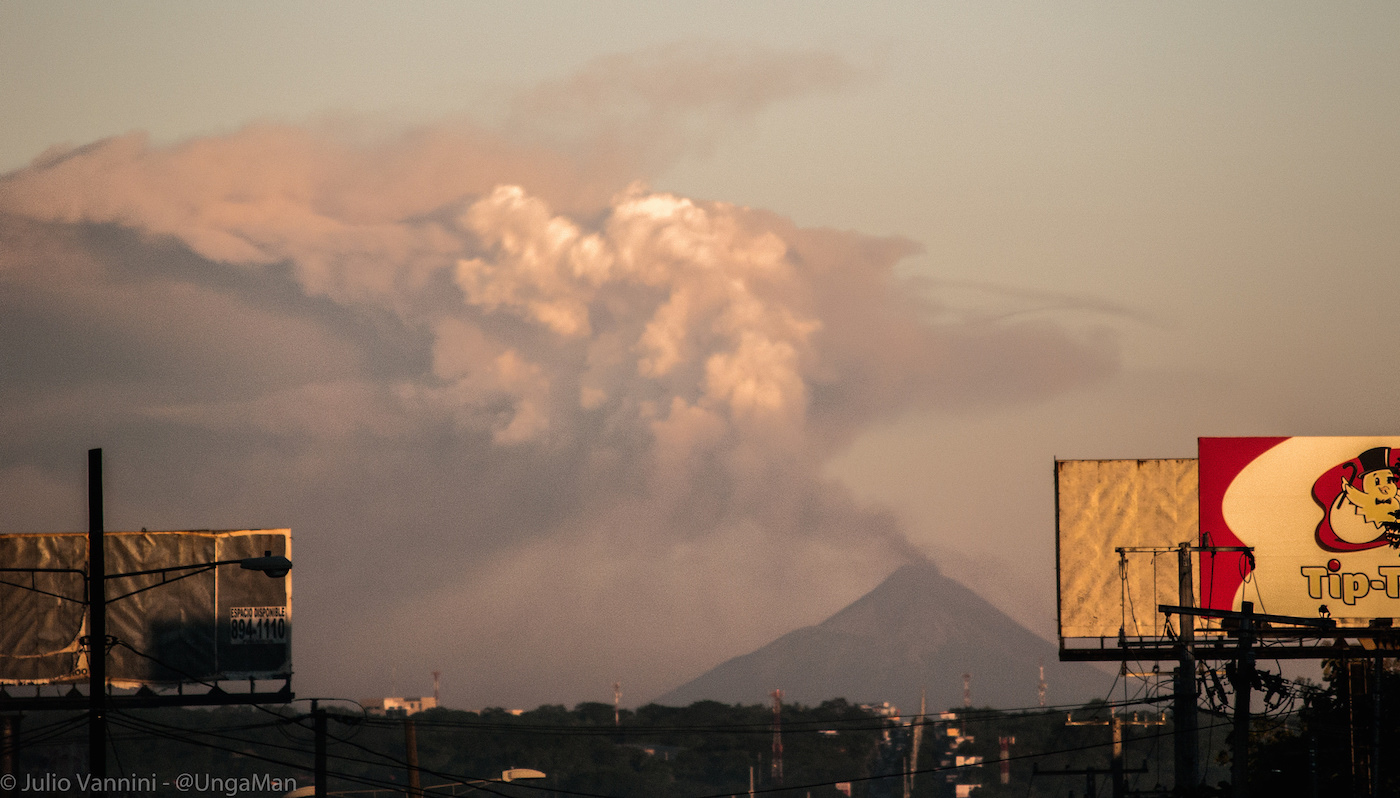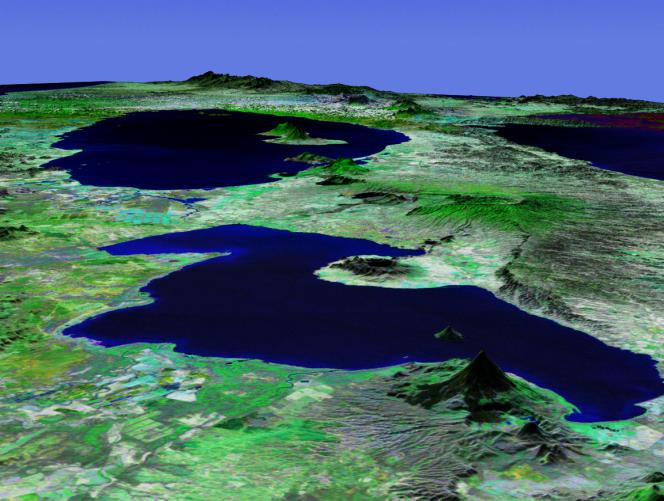Nicaragua's Momotombo Volcano Erupts for 1st Time in 110 Years

Nicaragua's Momotombo volcano has erupted for the first time since 1905.
Although volcanoes can experience periods of dormancy and activity, very little is known about why a volcano might stay quiet for 110 years and then rumble back to life, said Erik Klemetti, a volcanologist at Denison University in Ohio.
"There is no 'norm' for volcanoes, because it's all going to be up to the individual systems," Klemetti told Live Science. [Unforgettable Images of Cotopaxi Volcano Rumbling to Life]
Momotombo is a cone-shaped stratovolcano (a cone-shaped volcano composed of layers of lava and ash) near León, Nicaragua. The same fiery geology that powers the volcano also powers a geothermal plant nearby.
The volcano began spewing ash and lava yesterday (Dec. 1). Today, a webcam shows a haze of smoke still emanating from the crater. According to the Smithsonian Institution Global Volcanism Program, Momotombo had a particularly active period in the late 1800s, with 10 confirmed eruptions between 1858 and 1905. It also erupted several times in both the 1600s and the 1700s; in 1610, an eruption destroyed the original site of the town of León.
The volcano, like others in Nicaragua, sits in a seismically active spot where the Cocos Plate slips under the Caribbean Plate, in a process known as subduction. According to the Smithsonian, Momotombo's current cone is relatively young — it started forming about 4,500 years ago. Prior to this eruption, it stood 4,255 feet (1,297 meters) tall.
No one knows why Momotombo slept quietly for a century, nor why it woke up now, Klemetti said. The geological processes that are subducting the Cocos Plate create conduits for magma to escape to the surface, but these pathways are idiosyncratic. Geoscientists study crystals in lava to gauge how long the cooked rock was at a given temperature (and thus, a particular depth and pressure). This can provide clues as to how long it took the magma to get to the surface after it formed, Klemetti said. But studies turn up very different rates of travel at different volcanoes, ranging from hours to centuries, he said.
Get the world’s most fascinating discoveries delivered straight to your inbox.
"Different volcanoes are going to have different periods of time based on all sorts of different things going on in the crust," Klemetti said.
Likewise, there's no clear answer as to why some volcanoes go quiet for a century — or even tens of centuries — and then erupt again. Researchers have searched for links between earthquake activity and later eruptions, and haven't found much of a connection, Klemetti said. There may be some rough correlations between extremely large earthquakes in Chile and volcanic activity six to nine months later, he said, but the relationship is small.
Central America has been relatively eruptive lately, Klemetti said, but there's no link between the eruptions other than the ongoing subduction of the Cocos Plate, where all of the volcanoes sit. Guatemala's Fuego volcano has been erupting periodically all year, and Nicaragua's Telica volcano, one of the country's most active, is also in a period of minor eruptive activity.
Follow Stephanie Pappas on Twitter and Google+. Follow us @livescience, Facebook & Google+. Original article on Live Science.

Stephanie Pappas is a contributing writer for Live Science, covering topics ranging from geoscience to archaeology to the human brain and behavior. She was previously a senior writer for Live Science but is now a freelancer based in Denver, Colorado, and regularly contributes to Scientific American and The Monitor, the monthly magazine of the American Psychological Association. Stephanie received a bachelor's degree in psychology from the University of South Carolina and a graduate certificate in science communication from the University of California, Santa Cruz.

